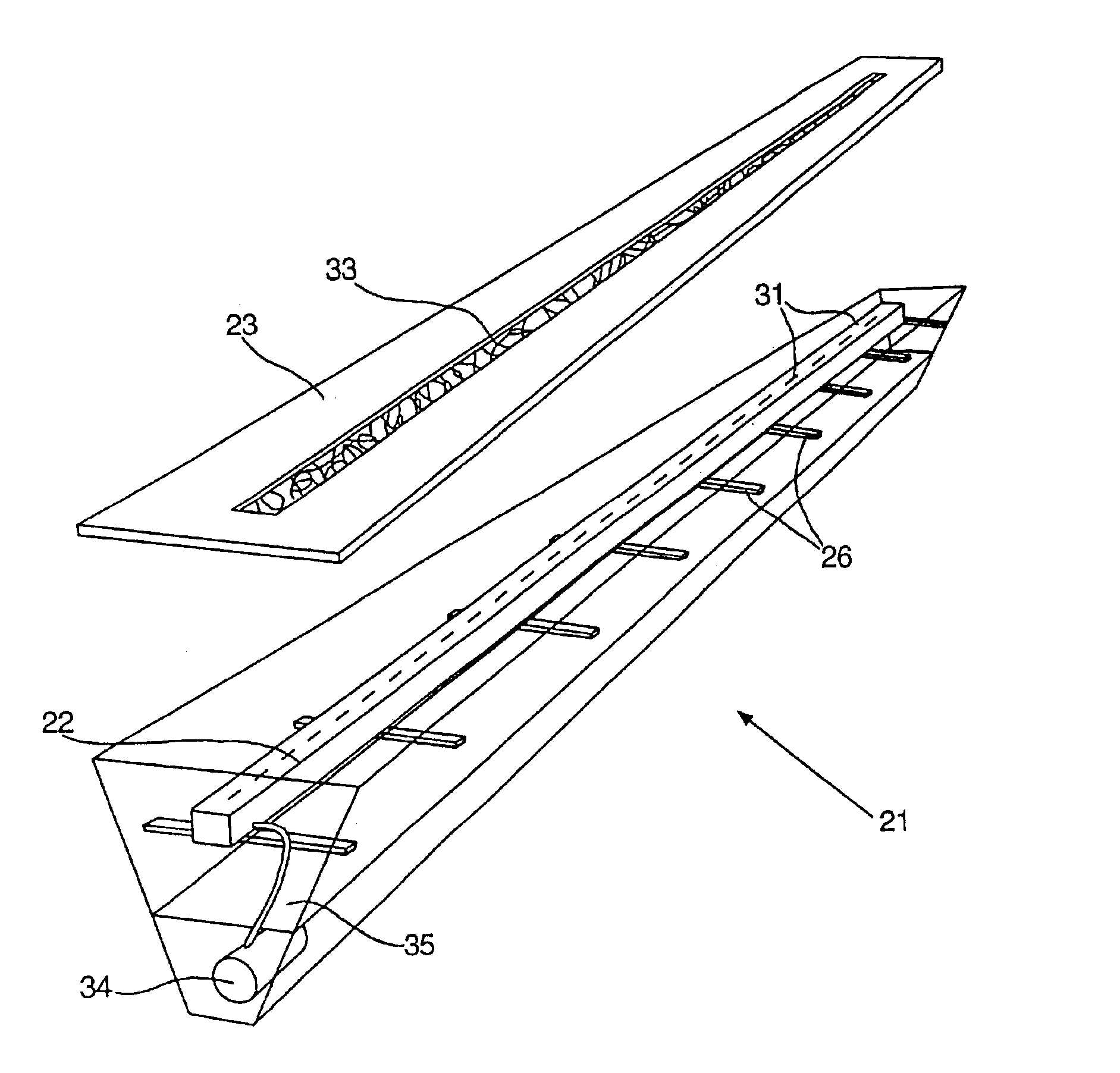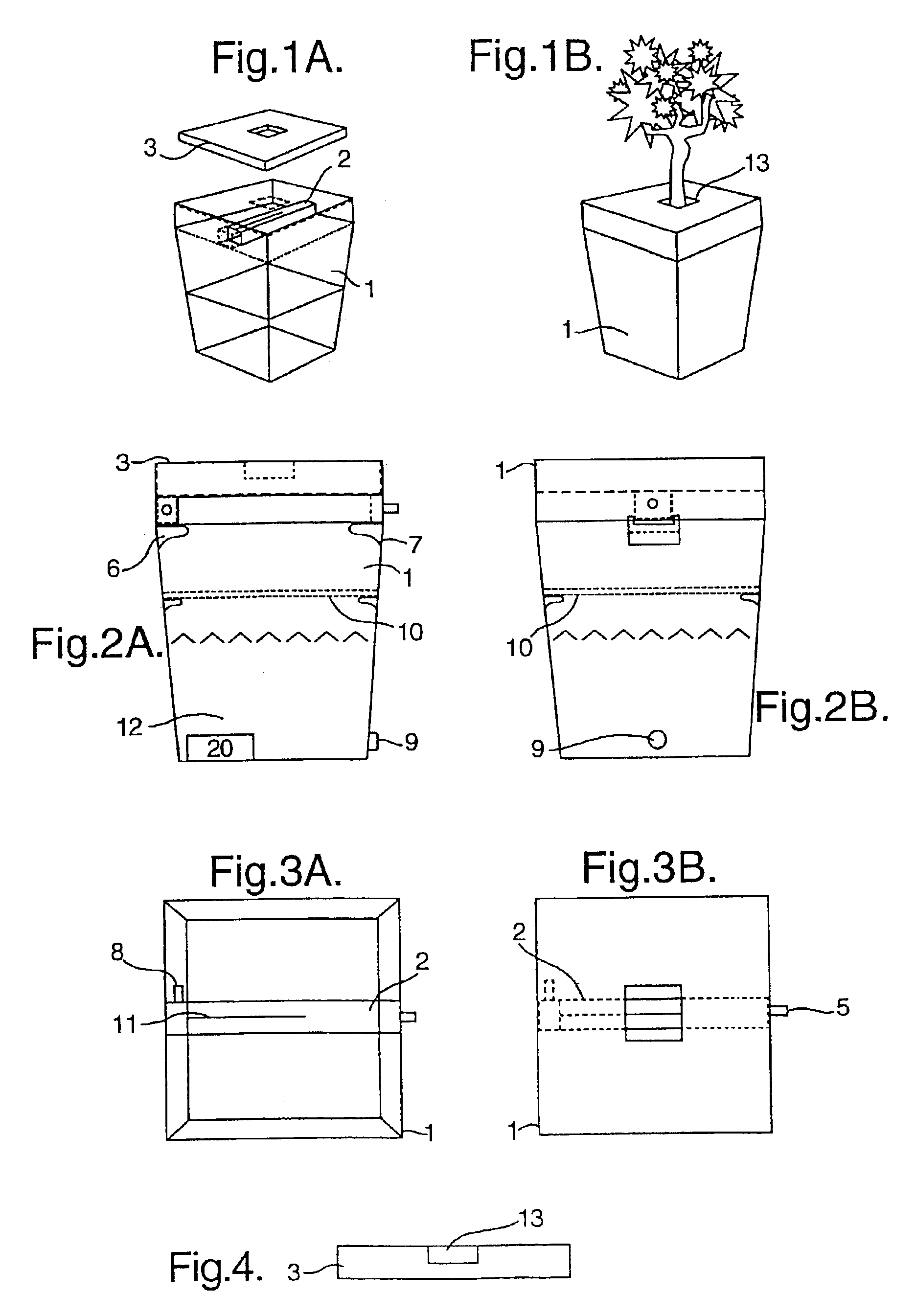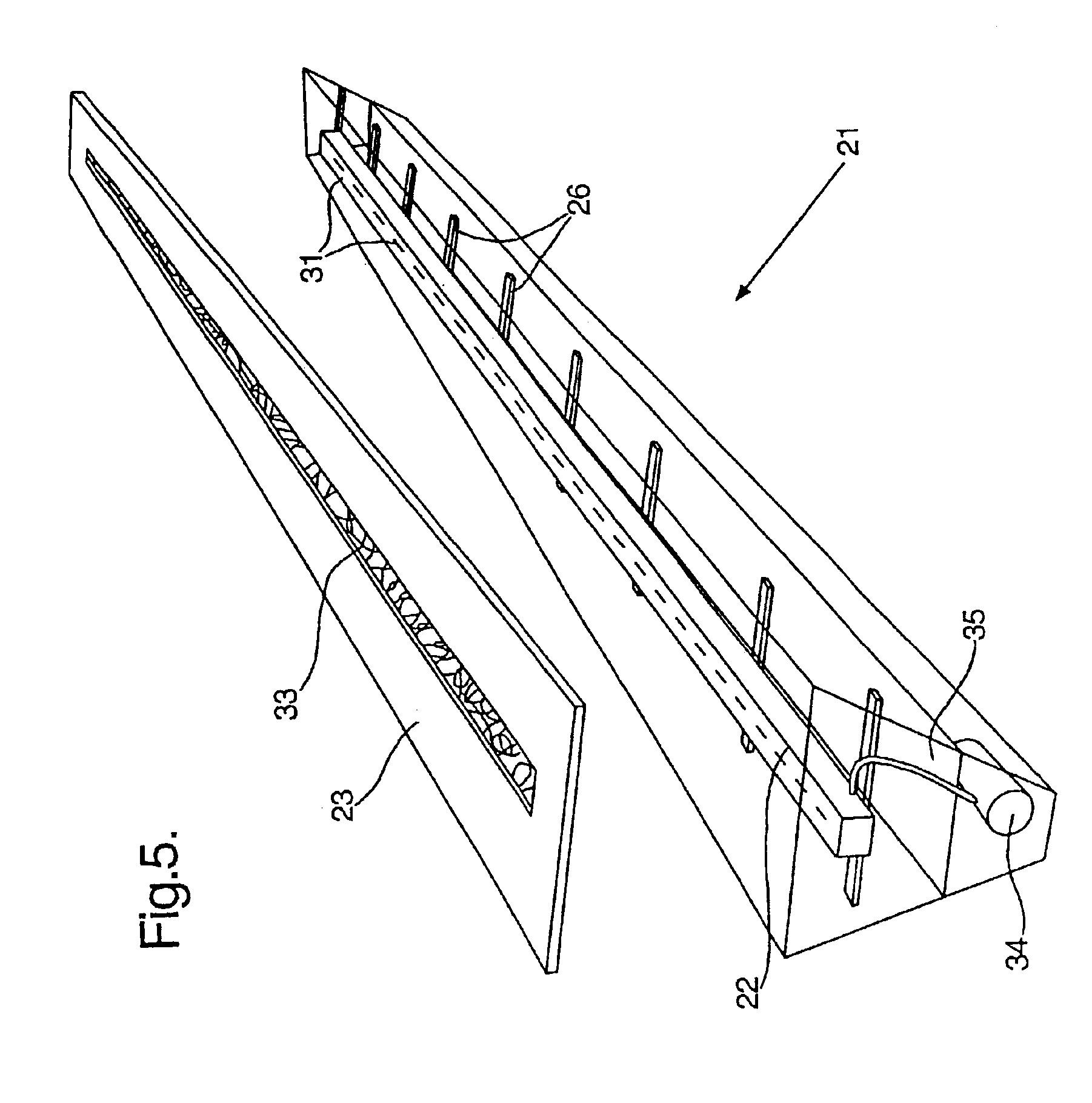[0018]For propagation purposes, the support unit is preferably trough-like, such as guttering or ducting or arcuate cross section over which the circulating water flows. In this case, the single system preferably has a plurality of
plant growth apertures in the lid, whereby a plurality of seeds may be propagated at once. However, for growth beyond the bare-rooted
cutting stage, it is preferred that the support unit comprises substantially a conduit, more preferably of square or rectangular cross-section, having therein one or more apertures in the top (in use in the preferred embodiment, lid-facing surface thereof to allow overflow of the circulating water therefrom. Most preferably, the overflow apertures are angular in plan view, and rounded or circular apertures should be avoided to prevent clogging by the
plant roots.
[0026]As well as the lid, the support unit is another important feature of the system according to this invention. In prior art systems, the plants are supported by a
growth medium comprising rockwool or the like, which gives rise to many of the problems mentioned hereinbefore. However, no such growth or support medium is required in the present system for successful
plant growth from seed through bare-rooted
seedling to immature plant (leaves, stem, roots) and finally fully-mature, such as flowering or fruiting, plant. It has been found surprisingly, that the support unit, with liquid nutrient flowing therethrough, provides excellent physical support for the growing plant, whose
root system increasingly adapts to wrapping around the unit, thereby anchoring the plant in the container. The weight of the growing plant is therefore borne by the support unit. If desired, optionally, a water-permeable or penetrable covering may be provided over the overflow aperture(s) on the support unit, such as a covering of synthetic, polymeric material, such as a
polyester / nylon woven sheet, such as is sold under the
trade name TERRAM, to aid anchorage.
[0027]Since no growth / support medium is required, the roots do not rot when the plant reaches the end of a growing cycle (eg finishes flowering), and removal of the plant does not cause damage to the
root system, which is particularly advantageous in the case of edible roots or roots that may otherwise be commercially important. In the case of edible roots, such as tubers or the like, an additional root support may be provided below the support unit in order to take the weight of such root vegetables as potatoes, swedes and the like. This additional root support may comprise a hammock of a water-permeable or penetrable covering of the same or a similar material as that described above for the optional support unit covering, slung underneath the support unit and suspended from each end thereof. Alternatively or as well, the support unit may further comprise additional support means in the form of stepped or shelving elements, extending downwardly from the base of the support unit. Such stepped or shelved support means may comprise substantially horizontal and flat shelves or platforms, or may comprise gutter-like support means for the foot system.
[0029]The plant liquid nutrient for use in the system of this invention may comprise water only, or a mixture of water and a conventional or known plant liquid feed or liquid fertiliser. For propagation and the early stages of plant growth from seed or bare-rooted
cutting, water alone may suffice. Whereas in prior art systems, emptying of the system and recharging with nutrient is required and cumbersome, in the present system, the liquid feed can simply be administered alone or in
aqueous solution to the container or tank reservoir without the need for drainage. Repeated emptying and recharging of this system is not necessary, as it is clean, simple to use, and adaptable to each stage of the plant's life cycle.
[0030]It has also been found, surprisingly, that, in addition to ease of handling, growth of plants in the system according to the invention is accelerated compared to that using conventional soil methods. For example, sweetcorn (maize) planted about 5 cm below ground will normally take about a week to appear above the surface, whereas the same stage is reached in about 48 hours using the system according to the invention, and in about 5 days the sweetcorn has grown equivalent to about 3 weeks in the soil. Other advantages include the quality of the plants produced by the system according to the invention being superior to those grown by other methods. In particular, we have observed that the leaves of strawberry plants grown in our system are consistently fatter and juicer than seedlings seen in garden centers.
 Login to View More
Login to View More  Login to View More
Login to View More 


